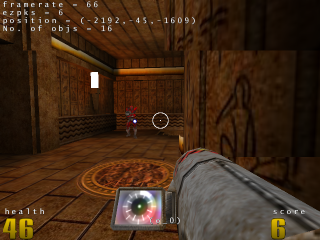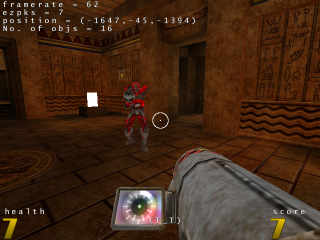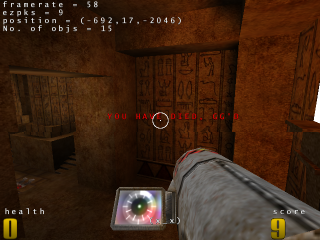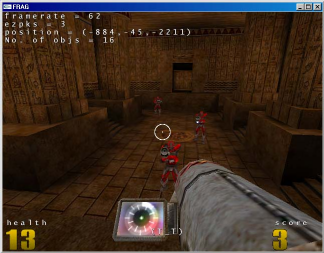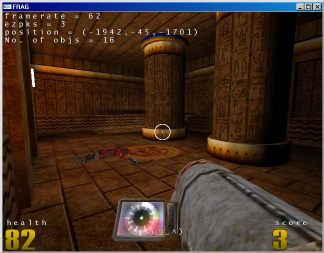Frag
Revision as of 22:32, 23 February 2008 by Henk-Jan van Tuyl (talk | contribs) (Changed the download section)
The printable version is no longer supported and may have rendering errors. Please update your browser bookmarks and please use the default browser print function instead.
Frag
Frag is a 3D first person shooting game written in Haskell, by Mun Hon Cheong. It is licensed under the GPL. The design and implementation of Frag is described in Mun's undergraduate thesis, Functional Programming and 3D Games.
Features
- Yampa, a domain-specific embedded language for the programming of hybrid systems that using the concepts of Functional Reactive Programming (FRP) was used to program the game entities.
- The Quake 3 BSP level format, Q3Map2, and the MD3 format for models and animations are used in this game.
- Sven Panne's OpenGL binding, HOpenGL is used to render graphics.
Requirements
- GHC 6.4 or greater, providing HOpenGL-2.0.
- OpenGL drivers that support the vertex array and multitexture OpenGL extensions
- Frag has portability problems. It is known to work on i386 and AMD64, and known not to work on big-endian systems.
Download
The code can be downloaded from Hackage
Contributions
Frag needs contributions from the community! Darcs send patches to Don Stewart.
Update: The problematic areas of the code seem to be BSP.hs, Curves.hs and MD3.hs: lots of explicit pointer manipulation, and non-endian-safe I/O.
Screenshots
BibTeX Entry
@mastersthesis{Frag,
author = {Mun Hon Cheong},
title = {Functional Programming and 3D Games},
year = {2005},
month = {November},
school = {University of New South Wales},
address = {Sydney, Australia},
abstract = {Games are commonly programmed in imperative languages.
Functional languages have been known to have benefits but have
rarely been used to program games. In this thesis we implement
a first person shooting game in Haskell and Yampa. The merits
of this approach are examined.}
}
